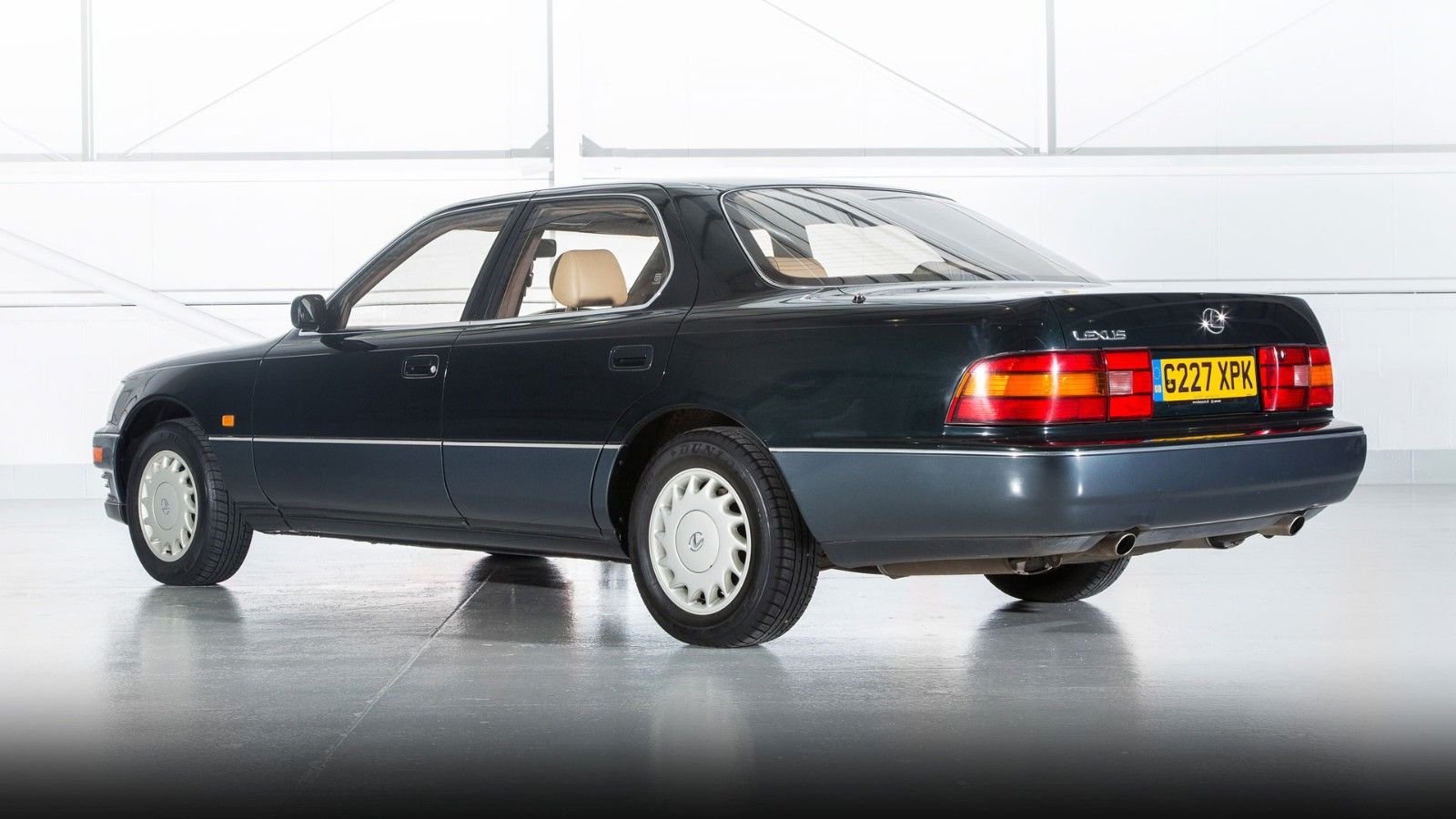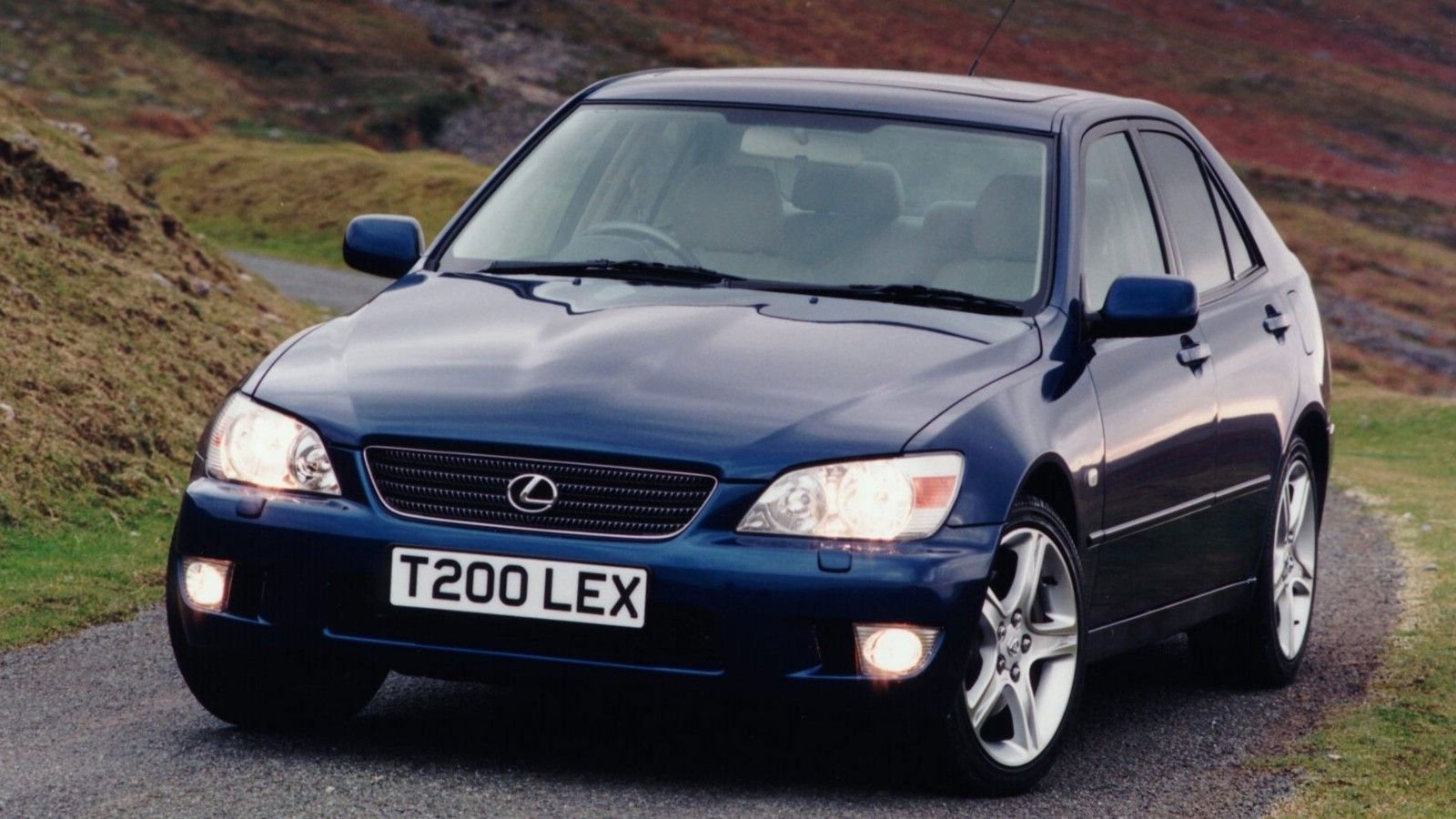Celebrating 30 Years of Lexus' Success
With over 10 million vehicles sold worldwide, Lexus remains to be a force to be reckoned with when it comes to producing the most reliable luxury cars on the market. The company is currently looking to switch all of its models to fuel alternative sources by 2025 and be the choice of consumers for decades to come.






























10 Million Vehicles
As of February 2019, Lexus had sold 10 million vehicles worldwide. The automaker has been behind some of the most notable models, including the LFA, for the last 30 years. The story of how Lexus started dates to as far as the mid-1980s when Gorden Gecko told us all that "Greed is good." Its entire history would definitely need more than a slideshow, but we'll attempt to look at some of its greatest achievements right here.
Photos Courtesy of MotoringResearch.com.
In the Beginning
In 1983, Eiji Toyoda, the then chairman of Toyota, wanted his staff to create a luxury sedan that would be able to match up to premium brands such as BMW, Jaguar, and Mercedes-Benz. The company knew that the luxury market was growing fast and it would need a model of its own for a slice of the pie. The loyal customers that had fallen in love with the Camry now wanted more as they grew more affluent. Toyota knew that another more sedate vehicle wasn't the solution. Not when the customers could afford a fancy Jaguar or Mercedes. The then-president and CEO of Toyota U.S., Yukiyasu Togo, encouraged and supported the idea.
>>Join the conversation about 30 years of Lexus staying power right here in the Club Lexus Forum!
Project F1
The designers and engineers were given the opportunity to pursue the project and did so with gusto. Toyota sent five people from the design team to the U.S. to study the heart, mind, and lifestyle of the conventional American luxury car buyer. Toyota then analyzed the leading manufacturer at the time and devised a plan to beat it. The result was the F1, a vehicle whose name stood for flagship and excellence.
>>Join the conversation about 30 years of Lexus staying power right here in the Club Lexus Forum!
Dealerships and the LS 400
Lexus debuted as a brand in 1988 at the Los Angeles Auto Show. As many as 1,500 dealers expressed their interest in a Lexus franchise. By May, Lexus had named 70 as their picks. In 1989, the company then unveiled the LS 400 at the Detroit Auto Show. It was a 4.0-liter V8-powered sedan that had undergone millions of miles of testing and had seen as many as 450 prototypes. Toyota picked the V8 engine over a six-cylinder because the latter wasn't as efficient and smooth for a luxury car.
>>Join the conversation about 30 years of Lexus staying power right here in the Club Lexus Forum!
Advertising
Toyota gave the task of bringing Lexus to the world to an ad agency called Saatchi & Saatchi. The press ads proclaimed how much Lexus was more of an invention rather than just a car. Most rival companies wouldn't admit it, but the brand did make a huge impression on the public. By the end of 1989, 16,302 vehicles had been sold with the LS 400 taking up 70 percent of those sales. The following year, sales ballooned to a crazy 63,534. Lexus models were sold in Japan as top-of-the-tier Toyotas at the time.
>>Join the conversation about 30 years of Lexus staying power right here in the Club Lexus Forum!
Lexus ES 250 and SC 300
Lexus sold the ES 250 alongside the LS 400. It was powered by a 24-valve V6 and mimicked much of the characteristics found in the Toyota Camry and Vista. Motor Trend described it as "A Camry that went to finishing school." Lexus then debuted the SC, a car built to compete with the lofty Mercedes SL coupes. Unlike the LC 400, it never got to the UK market. It was, however, sold as the Toyota Soarer in Japan.
>>Join the conversation about 30 years of Lexus staying power right here in the Club Lexus Forum!
Lexus GS 300
The Lexus GS 300 was a lovechild of the sporty SC 300 and larger LS 400. It was powered by a 3.0-liter straight-6 NA Supra engine and went by the name of the Aristo in Japan. Lexus later upgraded it with a 4.0-liter V8 engine. Its fourth-generation variant came out in 2012 with the world's first 12.3-inch display.
>>Join the conversation about 30 years of Lexus staying power right here in the Club Lexus Forum!
Lexus RX
Lexus began thinking of introducing a premium crossover to the market in 1993. By the end of 1997, the final design had been approved and prototypes had been tested. It was sold as the Toyota Harrier in Japan but went by the name of the RX in the states. Exports began in March 1998 and at some point, the RX accounted for more than half of Lexus sales. Lexus claims to have come up with the premium crossover segment. In 2004, it marked its two-millionth unit sold in America and debuted the RX 400h, the world's first hybrid luxury car. It also unveiled the third-generation GS 430 and GS 300, and the all-new IS 350 and IS 250 saloons.
>>Join the conversation about 30 years of Lexus staying power right here in the Club Lexus Forum!
Lexus IS 200 and IS 300
The IS 200 and IS 300 were built to compete with the BMW 3 Series and the Mercedes-Benz C-Class. The IS was sold as the Toyota Altezza in Japan and arrived in the U.S. in 2000. Toyota tasked Nobuaki Katayama with its development. He had been part of the development of the Corolla and was also part of Le Mans.
>>Join the conversation about 30 years of Lexus staying power right here in the Club Lexus Forum!
Lexus SC 430
The Lexus SC 430 first debuted as the Sport Coupe concept at the 1999 Tokyo Motor Show. Its production version appeared at the Paris Motor Show in 2000. Its design was done by Sotiris Kovos who drew inspiration from Italian powerboats. The production version was powered by a 4.3-liter V8 engine that was borrowed from the LS 430.
>>Join the conversation about 30 years of Lexus staying power right here in the Club Lexus Forum!
Lexus LFA
The LFA supercar was a showcasing of what Lexus could do if it chooses to let loose. The V10 supercar was way out of Lexus' normal activities at the time and was an exclamation to detractors who wrote the brand off as boring. This was Akio Toyoda's Bugatti Veyron. The LFA first appeared as a concept in 2005. By then, it had been through five years of development. Toyota took another two years to build it entirely out of carbon fiber. The second concept was showcased in 2007 before being finally produced in 2009. It came with a 4.8-liter V10 that was built with the help of Yamaha.
>>Join the conversation about 30 years of Lexus staying power right here in the Club Lexus Forum!
Lexus GS 450h and IS F
The GS 450h joined the RX 330 in promoting the Lexus brand as the pioneer of luxury hybrid vehicles. Lexus recently marked its 1.45 millionth hybrid unit sold with more sales rolling in daily. Sales of its "self-charging" cars have also increased by 20 percent from last year. The first IS F debuted back in 2007 and quickly inked out a place in entry-level luxury. It was built to take on the smaller cars like the Mercedes C Class and BMW's 3 series vehicles Lexus defined it as 'the most uncharacteristic car it had ever built."
>>Join the conversation about 30 years of Lexus staying power right here in the Club Lexus Forum!
Lexus HS 250h and CT 200h
The HS 250h was Lexus' first attempt at testing the waters of the hybrid luxury vehicle segment in the UK. The car was also the region's first hybrid luxury car but was followed by the CT 200h which was the first hybrid luxury hatchback in the world. Despite it having less space and the woeful CVT transmission, it still featured Lexus' reliability.
>>Join the conversation about 30 years of Lexus staying power right here in the Club Lexus Forum!
Lexus LF-LC, LC and RC F
The LF-LC was drop-dead gorgeous and dramatic when it debuted to the world. It was a testament to Lexus' desire to build concepts that would push the envelope but also lend themselves to a producible vehicle. It matched the LC's V10 performance and was nothing less than eye-catching as well. The RC F, on the other hand, was Lexus' way of rivaling the BMW M4 and other German performance coupes and sedans. Currently, it's available in a Track Edition which sheds weight and adds carbon-ceramic brakes to its heightened V8 power unit.
>>Join the conversation about 30 years of Lexus staying power right here in the Club Lexus Forum!
Lexus UX, RX, and NX
The future of Lexus is heavily influenced by crossovers that run on hybrid powertrain platforms as a way to shuttle buyers to and fro. As much as we would like to see more of the RC F and the LC, more and more consumers are looking at hybrid crossovers like the UX, RX, and NX as one size fits all choices. We expect to see the first fully-electrified Lexus in 2020, but in 2025, the automaker will have all running on fuel alternative powerplants.
>>Join the conversation about 30 years of Lexus staying power right here in the Club Lexus Forum!
Check out the how-to sections of ClubLexus.com for help with keeping your car running right.
